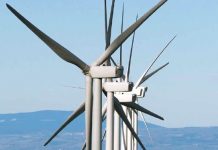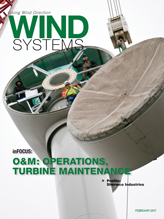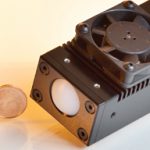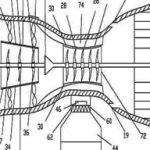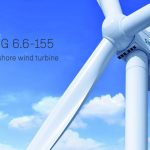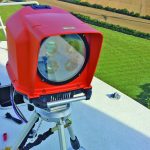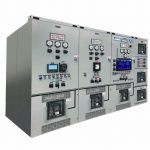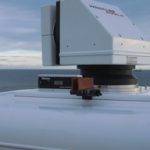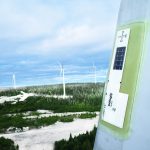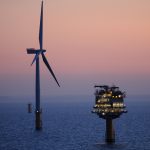In early 2017, Fraunhofer IWES is set to receive its own test field right in front of its doors in Bremerhaven thanks to funding from the Federal Ministry for Economic Affairs and Energy (BMWi).
The centerpiece will be Adwen’s prototype of the AD 8-180, currently the largest wind turbine in the world with a rotor diameter of 180 meters. Construction work is already underway, and the first measurements and tests will begin in spring. Comparison of field survey results with the data obtained on the large-scale test rigs will significantly expand the opportunities for further optimization of measuring and testing methods as well as risk mitigation for new turbine designs.
Fraunhofer IWES’s research project has a total budget of about 18.5 million euros and will make a considerable contribution to both quality assurance and cost savings in the wind-energy industry.
Near Test Rig
The first prototype of Adwen’s AD 8-180 offshore turbine won’t be getting its feet wet at its new home on the quay following the industry’s practices. The research wind turbine at the former airfield in Bremerhaven is just a stone’s throw away from the Fraunhofer nacelle test rig — a stroke of luck for the Fraunhofer scientists, as Adwen’s 8 MW turbine can be connected to the existing IWES infrastructure without any major complications.
“Research and development are key for further reducing the costs involved in expanding offshore wind energy,” said Uwe Beckmeyer, Parliamentary State Secretary at the Federal Ministry for Economic Affairs and Energy. “The Federal Ministry for Economic Affairs and Energy is therefore providing funding worth 18.5 million euros for the testing ground for offshore installations in Bremerhaven. The aim is to test the operation of the installations under real-life conditions and gather important data that can be used to set up the installations on an industrial scale. We are thus making a contribution to strengthening the role of offshore wind energy as an important pillar of the energy transition by handing over the official grant notification.”
Infrastructure Scheme
Following the successful operation of the test rigs for rotor blades and nacelles, the turbine serving as a test platform represents a further important piece of the puzzle in the research institute’s infrastructure scheme. The results of the test benches can now be compared systematically with the measurements taken in the field and the test methods optimized accordingly.
In particular, this makes it possible to develop and validate new methods for the performance of fault ride through (FRT) tests via coupling of the 44 MVA medium-voltage grid emulator already integrated in the nacelle test rig as well as to conduct high-resolution 3D wind field measurements for optimization of future offshore wind-farm layouts.
“The test field with the research turbine is the highly valuable completion of our unique testing infrastructure,” said Andreas Reuter, managing director of Fraunhofer IWES. “It empowers us to find solutions for fundamental aspects concerning reliability and grid integration and contributes essentially to the future improvement of very large turbines.”
Certification tests in the field require the operation of the wind turbine at the whole spectrum of wind conditions. The conditions can, however, be reproduced exactly in the lab, making it possible to conduct certification measurements with a high degree of accuracy and reducing the time needed for the field-test campaign. The development risks for new turbine generations are minimized, and ultimately the energy production costs for wind energy are reduced by means of optimized and absolutely reliable design.
Adwen Cooperation
Fraunhofer IWES will develop its research on testing procedures in close cooperation with Adwen GmbH.
“We are very pleased to collaborate with the Fraunhofer IWES in our field tests of our prototype of the AD 8-180,” said Luis Álvarez, general manager of Adwen GmbH. “Already, the Fraunhofer IWES DyNaLab has allowed us to exhaustively validate our technology, resulting in great confidence about the optimal performance and reliability of the turbine. In this way, we can develop cutting edge technology with minimum risk. That is crucial to continue reducing the cost of offshore wind energy.”
Source: Fraunhofer IWES
For more information, go to www.windenergie.iwes.fraunhofer.de


















